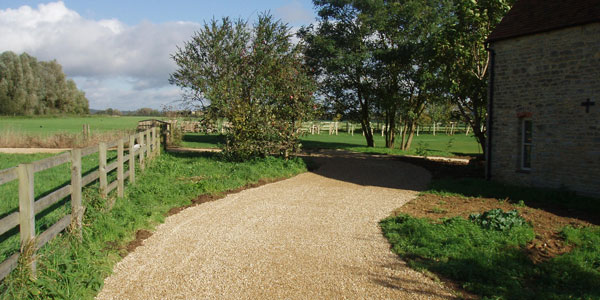How to Lay Gravel Correctly

Gravel can be a great surface to choose when re-decorating your garden. It’s a cost-effective and easy option that can help transform your garden as long as you consider the size of gravel, surface below the gravel and what role you want the gravel to have.
Gravel can be difficult to keep clean and clear of fallen leaves or pestering weeds which is why it is very important to consider the preparation needed to ensure your garden will look at its best once everything is finished.
Before you start, it is a good idea to mark out the section of land you wish to place the gravel. This will help the layout look neat and precise which will save a lot of fiddly altering afterwards.
Size of Gravel
It is important to consider the purpose of the gravel before purchasing. If you wish to use the gravel for a more decorative use, then you have a much wider option on which gravel you can use. Decorative gravel does not get disturbed very often and so it does not matter if you choose to have very fine gravel. Using larger gravel is also acceptable as it will not be used underfoot and so there is no need to consider how practical it would be for walking on.
If you wish to use the gravel for a more practical purpose such as for footpaths, then it may be a good idea to choose medium sized gravel. If the gravel is too small/fine then it will be moved around too easily as you walk over it, however, if the gravel is too large then it may make walking on the surface difficult or uncomfortable.
Gravel for path/seating area
If you do choose to use gravel for a more practical purpose such as a footpath or seating area then it is advised that you dig down roughly 10cm and place a base of hardcore before laying around 50mm of gravel over the top. This will prevent the gravel from moving and sinking under various weights and movement.
Gravel for decorative purposes
If you wish to use the gravel for a more decorative purpose then this can be a very simple task. All you will need to do is scrape away the surface leaving it flat. It is a good idea to place a weed supressing membrane over the top to prevent weeds from breaking through the gravel. Then all you have to do is lay your gravel over the top to suit the look you wish to achieve. The weed supressing membrane will not prevent plant growth; you only need to cut out the section you wish to use for a planning space with a knife.
Finishing touches
Finally, it is always a good idea to use some kind of barrier along the edges of the gravel to prevent it from moving out of place. You can either use timber which is a cheap and easy option but makes it difficult to use when working with curved edges, or you can use larger cobbles or bricks that are easy to shape and can be cemented down to create a more permanent edging for your gravel.
